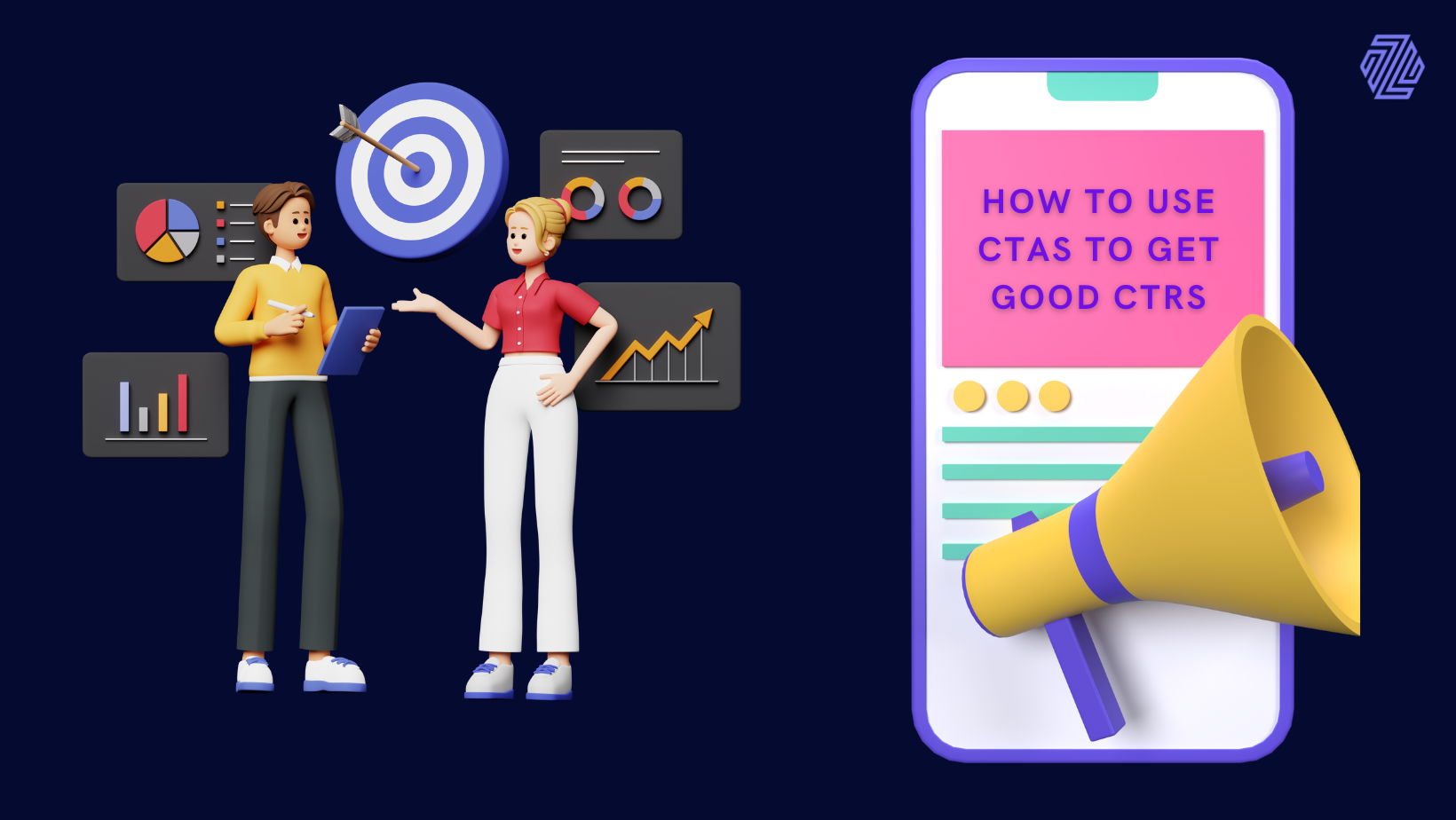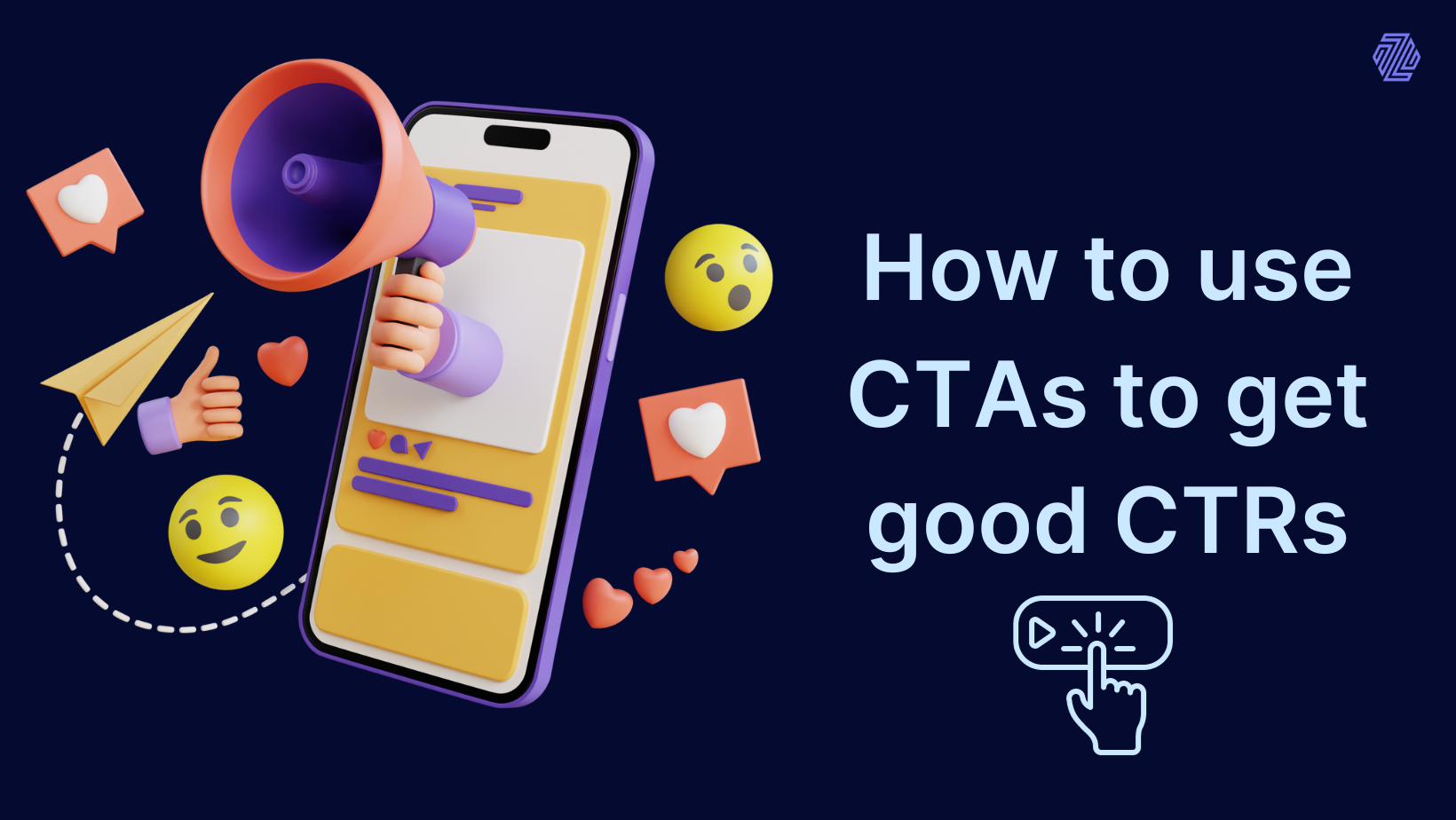You’ve built an awesome website, and written engaging content, and now you’re eagerly waiting for visitors to click and engage further. But how can you encourage those clicks and interactions? One powerful solution is the Call-to-Action (CTA). Let’s dive into the basics of CTAs and how it can be used to boost click rates!
Remember, CTA is not just about a click; the journey begins there. It is your duty to make sure the user’s post-click experience is delivered as promised.
What is a CTA?
CTA, short for ‘call to action,’ is really important for websites, apps, emails and other online platforms. Basically, a CTA is like a friendly push that asks users to do something specific, like clicking a button, filling out a form, signing up, buying something, or subscribing. The main goal of a CTA is to help users and keep them interested so that they can use the platform in a clear and meaningful way. When businesses and developers strategically position CTAs and ensure they are appealing, it guides users to perform desired actions on the platform, creating a smoother and more delightful experience for all.
Benefits and advantages of CTA:
-
It gives proper and necessary directions to the user, guiding them on what action must be taken next
-
A well-designed and strategically placed CTA can significantly boost conversion rates
-
CTA’s allow easy tracking, and it can be used to measure user engagement and conversion rates. This data can be used to improve the performance of the platform.
-
It aligns with the specific goals of a campaign and marketing initiative. They serve as a tool to direct users toward achieving those goals whether it’s generating leads, increasing sales, or driving traffic
-
CTAs help users navigate a website or application more easily by providing clear pathways. This can lead to a better user experience.
-
CTAs enable businesses to tailor and customize their message based on the context and audience. Different CTAs can be used for different segments, allowing for a more customized approach to engagement.
In summary, CTAs play a crucial role in guiding user behavior, enhancing engagement, and ultimately driving the success of marketing efforts in achieving business objectives.
Important Points to Remember
- Be Clear and Concise:
The fundamental rule of CTAs is clarity. Users should instantly understand what action you want them to take. Use direct language and be specific about what they will gain from clicking.
For example, instead of “Click Here,” use something like “Get Your Free E-book Now.” It clearly conveys the benefit, encouraging more clicks.
- Highlight Value Proposition:
Your CTA should communicate the value you are offering. Whether it’s a discount, a free trial, valuable content, or a subscription, make it apparent in your CTA. Express how the user will benefit by clicking, making it irresistible to pass up.
- Use action words:
Utilize strong action verbs to prompt action. Words like “Discover,” “Join,” “Try,” or “Download” imbue a sense of movement and excitement, motivating users to act on the CTA.
- Use intuitive designs and place them in the right positions:
The design and placement of your CTA can impact its effectiveness. Ensure it stands out visually, using contrasting colors and design elements that draw attention. More importantly, place the CTA where users naturally focus, such as at the end of a compelling piece of content or in a prominent location on the webpage.
See how to create the perfect call to action.

How to use CTAs to get good CTRs:
If you’re just starting your journey in the vast world of digital marketing, you’ve likely come across the term “CTA”. Mastering the art of crafting effective CTAs can significantly boost your Click-Through Rates (CTRs) and drive success for your marketing campaigns.
Let’s dive into some beginner-friendly tips on how to use CTAs to achieve impressive CTRs.
1. Understand Your Audience:
Before you create any CTA, you need to understand your audience. What are their needs, desires, and pain points? Tailor your CTA to address these aspects and provide a solution. Knowing your audience well will help you craft a CTA that resonates and compels them to take the desired action.
Note: The article How to find your Ideal Customer Profile might be helpful.
2. Be Clear and Specific:
Your CTA should be crystal clear and specific about what action you want your audience to take. Avoid vague language and instead, be precise. Whether it’s “Sign Up Now,” “Get Your Free E-book,” or “Start Your Trial,” make sure the message is direct and leaves no room for confusion.
3. Design Matters:
The design of your CTA can’t be overlooked. Use contrasting colors, bold fonts, and appealing graphics to make your CTA visually striking. It should be intuitive so that it stands out and draws the reader’s attention.
4. Test and Optimize:
Don’t settle for the first CTA you create. A/B testing is your best friend. Experiment with different variations of your CTA, test them with your audience, and analyze the results. Over time, you’ll discover what works best for your audience and industry.
5. Incorporate CTAs in Various Platforms:
CTAs are not limited to just emails or websites. You can use them effectively on social media, blog posts, advertisements, and more. Tailor your CTAs according to the platform you’re using to maximize CTRs.
6. Monitor and Analyze Performance:
Regularly monitor the performance of your CTAs. Track metrics like CTRs, conversions, and engagement rates. Use these insights to refine your CTAs and continually improve your marketing strategy.
Click here to know whats a good call to action click through rate.

Maximizing Conversion Rates in Cold Emails
The CTAs aren’t just restricted to apps and webistes, but also provide immense value in your Cold Email, as cold emailing is a valuable tool in the world of marketing, allowing you to connect with potential customers and introducing them to your offerings.
To turn these cold emails into conversions, the strategic use of Call-to-Actions (CTAs) is essential. A well-crafted CTA can guide your recipients to take the desired action and propel them down the sales funnel.
Read this article to know How to do Cold Emailing Rightly in 2023.
How to optimize CTA usage in Cold Emails
Craft and create an Effective Call to Action:
The language and phrases you use in your CTA are crucial and important. Make it compelling and persuasive, providing a clear and appealing reason for the user to take action.
For example:
- Join our exclusive community for insightful content and updates
- Take advantage of this limited-time offer for a 60% discount
- Start your journey towards a healthier lifestyle – subscribe now!
Leverage Social Proof:
Incorporate elements of social proof within your CTA to build trust. Show positive reviews, testimonials, or the number of satisfied customers to instill confidence in the recipient.
For example:
- Join our thriving community of 10,000+ satisfied customers and elevate your business today!
- See why our users rave about our product – explore now!
- Rated 5 stars on {G2, Google etc}– claim your free trial!
Highlight Benefits:
Clearly convey the benefits or value that the user will gain by clicking on the CTA. Explain what’s in it for them and how the action will positively impact their needs or challenges.
For example:
- Discover how our solution can streamline your workflow and save time
- Unlock a world of possibilities with our innovative features – click to explore!
- Experience the benefits of our service and propel your business forward.
Create a Sense of Exclusivity:
Make the user feel special and privileged by using language that conveys exclusivity. People are more likely to act when they believe they are part of an exclusive group or offer.
For example:
- Limited spots available for early adopters – claim yours now!
- Be the first to access our new feature – click to be in the know!
- Exclusive offer for our valued subscribers – don’t miss out.
Optimize CTA Placement:
Carefully consider where you place your CTA within the email. Experiment with placing it at the beginning, middle, or end, and analyze which position garners the highest engagement.


